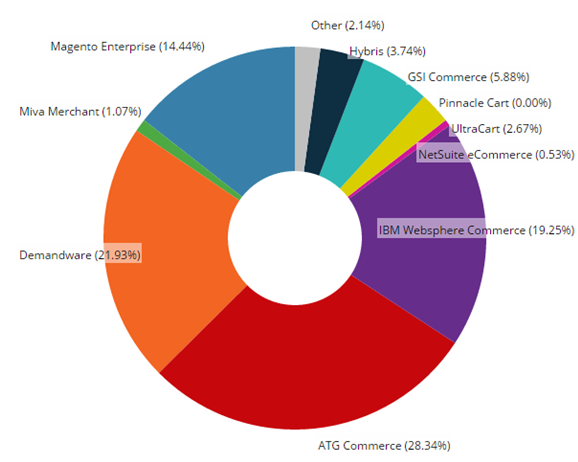Parameter handling
One of the most frequently occurring trends with ATG’s SEO performance is the handling of parameterised URLs, that can either lead to duplicate content, keyword cannibalisation (2 or more pages targeting the same phrases), delayed crawl, or just plain burn through unnecessary crawl budget.
Taking a look at Viking-direct.co.uk just as an example, we have the URL path and parameter – emptySpecialLinks.do?ID= (with ~315 pages indexed).
Example URL:
https://www.viking-direct.co.uk/emptySpecialLinks.do?ID=canonshop
The parameters refer to brand shop pages, however, the brands themselves can be located as static URLs navigated to from the main brand directory (https://www.viking-direct.co.uk/catalog/brandSearch.do) e.g. in the above instance:
https://www.viking-direct.co.uk/a/bb/Canon/N=2&cbxRefine=300506/
Neither URL has accurate Meta data in place to describe the content on the page, with very little value add (thin content), so actually both page types are irrelevant in their current state and a prime target for Panda.
Another example being the ‘Sort By’ & ‘Show’ navigation on product category URLs:
These links often redirect to a separate search URL structure e.g. from https://shop.lego.com/en-GB/Apparel-Accessories-ByCategory selecting price low to high, redirects the URL to https://shop.lego.com/en-GB/catalog/productListing.jsp?_requestid=1031137
The same occurs for any of the ‘Show’ links, and together result in over 340 duplicate URLs being indexed.
Faceted navigation
The other main SEO issue with sites using ATG, and especially in combination with Endeca, is the faceted navigation.
The navigation has the potential to create thousands of near similar pages, using different combination of search facets that can all be crawled and indexed by search engines. There are also facets that are useful for users, but not all that great for search engines to be spending their time on i.e. customer ratings, delivery (in stock, awaiting stock) etc.
Let’s take for instance chainreactioncycles.com, which makes use of parameters to define each facet. For example:
https://www.chainreactioncycles.com/mountain-bikes?f=4294957726,4294961989
https://www.chainreactioncycles.com/mountain-bikes?f=4294961989,4294957726
The contents of both of these URLs is exactly the same (both show Commencal & Corratec mountain bikes), just the parameters appear in the URL in a different order.
Now ChainReactionCycles.com have opted to block the ?f= parameter in robots.txt altogether, building a separate brand architecture on their website to capture related searches.
However, this approach whilst restricts crawl budget from being wasted, it also restricts the ability to capture longer tail searches that are still very much relevant e.g. colour, frame size, material (carbon, aluminium etc.).
To optimise sites using faceted navigation on ATG commerce you first need to understand which pages are capable of driving traffic, whether the content can be accessed at multiple URLs (ordering), and what parameters or ids are then utilised to define each facet (sub folders, commas, parameters etc).
Regardless of the size of your retail enterprise, getting your SEO configuration wrong can severely damage or restrict your organic visibility. By following a few simple rules and winning support to develop your site, a good deal of performance can be teased out of organic search!

